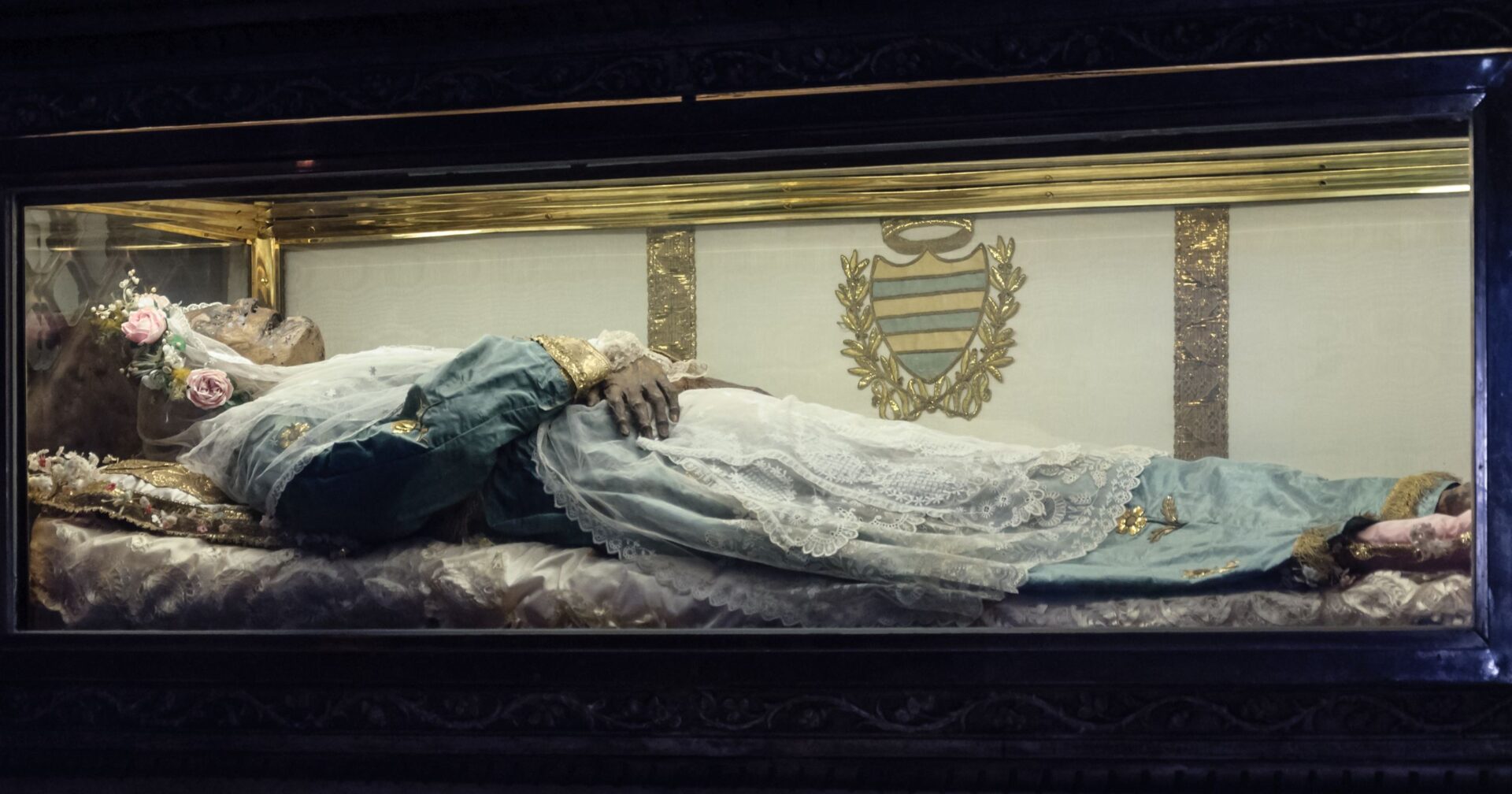Throughout history, the smell of roses and other scents have been piously associated with certain saints. Lacking a natural explanation, some saints give off a pleasant odor during life, in death, and even after death – a theological gift called Osmogenesia.
“But thanks be to God, who always leads us in triumph in Christ and manifests through us the odor of the knowledge of him in every place. For we are the aroma of Christ for God among those who are being saved and among those who are perishing, to the latter an odor of death that leads to death, to the former an odor of life that leads to life.” – 2 Corinthians 2:14-16
The earliest account of Osmogenesia is that of the martyrdom of Saint Polycarp. When Roman authorities lit the pyre to burn him at the stake in 155 A.D., it is said not the smell of charred flesh filled the air, but a beautiful fragrance like that of frankincense.
“Like a ship’s sail swelling in the wind, the flame became as it were a dome encircling the martyr’s body. Surrounded by the fire, his body was like bread that is baked, or gold and silver white-hot in a furnace, not like flesh that has been burnt. So sweet a fragrance came to us that it was like that of burning incense or some other costly and sweet-smelling gum.” – The Martyrdom of Saint Polycarp
The odor of sanctity that Catholic tradition recognizes as associated with the saints is rooted in Scripture. Saint Paul the Apostle writes in his Epistles to the Ephesians and Philippians about the fragment aroma being an offering to God.
“I am very well supplied because of what I received from you through Epaphroditus, ‘a fragrant aroma,’ an acceptable sacrifice, pleasing to God.” – Philippians 4:18
“So be imitators of God, as beloved children, and live in love, as Christ loved us and handed himself over for us as a sacrificial offering to God for a fragrant aroma.” – Ephesians 5:1-2
In the Middle Ages, the absence of carefully written records led to evidence of a saintly life coming from the personal recollections of those who personally lived around the folk saint. The odor of sanctity carried some theological weight in convincing the local ecclesiastical authority to formally canonize them.
In 1758, Pope Benedict XIV wrote his treatise De servorum Dei beatificatione et beatificatorum canonizatione on the process of the beatification and canonization of saints. In it, he made the first formal recognition of the odor of sanctity’s value in the beatification process.
Other saints throughout history displayed the odor of sanctity. Saints Teresa of Ávila and Maravillas de Jesús were reported to have emitted heavenly scents upon their death – the former said to have immediately filled her monastery when Teresa died. Known as “the Little Flower,” Saint Thérèse of Lisieux smelled like roses at her death, a scent that was able to be detected for nine months after her burial.
“The splendour of the rose and the whiteness of the lily do not rob the little violet of its scent. If every tiny flower wanted to be a rose, spring would lose its loveliness.” – Saint Thérèse of Lisieux
Those bearing the stigmata have also given off the odor of sanctity from their wounds. Saint Francis’ stigmata was reported to give off a a sweet perfume. Saint Padre Pio is known for his spectral scent of roses and pipe-tobacco in his life, and in his death considered a sign of his saintly intercession.
“One day, a famous Doctor had removed a bandage from a sore on Padre Pio’s chest. The gauze was saturated with the blood and the doctor had enclosed it in a container in order to bring the gauze to his laboratory. During the trip to Rome to analyze the gauze, an Officer and other people that were traveling with the doctor said ‘they smelled the perfume that usually emanated from padre Pio’. Not one of those persons knew that the doctor had the gauze soaked with the blood of Saint Padre Pio in the container. The doctor saved that gauze in his laboratory, and the strange perfume had stayed in the room for long time, so that when the patients went to him for the medical visits, they asked him for an explanation.”
(Read further accounts of Padre Pio’s celestial perfumes here.)
Photo credit: Myrabella via Wikimedia Commons


















[…] Throughout history, the smell of roses and other scents have been piously associated with certain saints. Lacking a natural explanation, some saints give off a pleasant odor during life, in death, and even after death – a theological gift called Osmogenesia. […]
[…] After his death, reports of miracle and graces received from praying for the intercession of Martin were so profuse that his body was exhumed after 25 years and found completely intact, with a mysterious sweet fragrance. […]